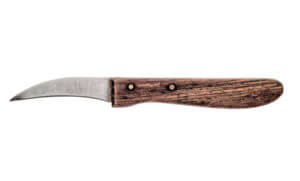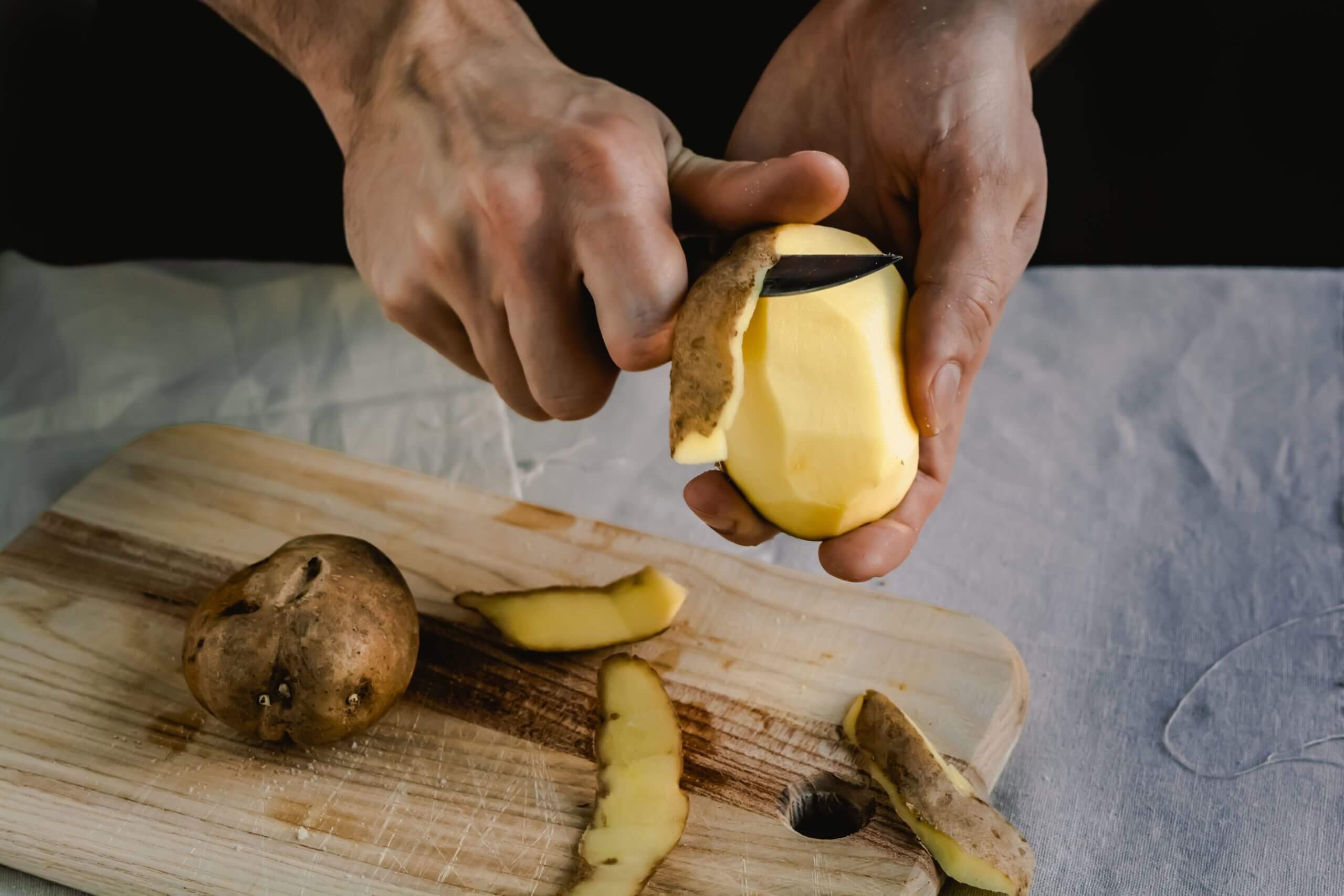How to Tournée Cut

French cooking techniques can be rather intimidating at first glance. Terms such as julienne, en papillote and chiffonade all sound so complicated! But after a little instruction and de-mystification, many of these techniques are simple and useful additions to your culinary toolbox.
After all, to julienne is just to cut into thin strips. Cooking en papillote is merely cooking in parchment paper. And a chiffonade is nothing more than a fine shred. Easy!
One such skill is the tournée cut. This technique turns fruits and vegetables into uniform elliptical shapes for even cooking. Hearty vegetables like carrots, potatoes and parsnips are perfect for the tournée cut. While this technique may be a bit time consuming for beginners, once you’ve mastered it, knowing how to tournée will add to the aesthetic and texture of sides, stews or roasts.
What is a Tournée Cut?
The word “tournée” is French for “turned.” In fact, potatoes that have been cut this way are sometimes called “turned potatoes.” The name comes from the technique — you’ll be rotating the vegetable in your hand as you make the cuts. The goal is to cut a small piece of vegetable into an oblong football shape, tapered at each end.
How to Tournée Cut
To master this skill, it’s best to have a tourné knife, also known as a bird’s beak knife. This small paring knife has a short, curved blade that resembles a beak. A normal paring knife can be used as well, but a tourné knife is a handy tool to keep around. It’s great for peeling shallots and onions, coring tomatoes and strawberries, and digging the eyes out of potatoes.

A tourné or bird’s beak knife
To start the process, peel your vegetable and trim it to your desired size. In French cooking, there are several “standard” sizes:
- Château — 2.5” long, 1.5” thick
- Anglaise — 2” long, 1” thick (most common)
- Cocotte — 1” long, 0.5” thick
- Olivette — 0.5” long, 0.25” thick
Since the Anglaise size is most common, we suggest you start there.
Hold the potato (or other vegetable) segment in your non-dominant hand between your thumb and fingers. Then with the knife in your dominant hand, place your thumb at the bottom of the vegetable. Carefully trim the edges toward yourself, tapering it near the ends. Repeat this process as you rotate the vegetable segment in your hand. Take your time as you get used to the curving motion.
A traditional tournée cut has seven sides which will emerge with seven smooth cuts from top to bottom. But you may find that at first, it takes several extra cuts to get the shape right.
After you have finished the process, the remaining segment of vegetable should look like a miniature football or barrel. Like all things worth doing, it takes practice to master the tournée cut, so don’t be discouraged if you don’t get it perfect right away.
Advanced knife skills: how to tournée cut
One of the challenges of the tournée cut is minimizing waste. If you keep trimming and trimming, you’ll end up with a tiny nub of potato and a lot of scraps! But even a textbook tournée cut results in some waste. Save those bits for mashed potatoes, purees, stocks and slaws.
This versatile technique can be used for apples, zucchini, pears, carrots, mushrooms and more. Any produce with a firm enough texture can be turned into even, bite-sized barrel shapes.
For zucchini, cut your 2-inch segment into thirds or quarters lengthwise. Then, just tournée cut the interior part of the vegetable, so you leave some of that vibrant green skin on the outside. It will add great color to your finished dish.
Culinary & Pastry Career Survey
Culinary & Pastry Career Survey
What's your ideal culinary career? Answer 20 simple questions and see if your dream career gets revealed to you.

We’ve compiled of all of the essential questions into one handy guide: Career options, description of skill requirements, and more!


Why Use the Tournée Cut?
The tournée cut isn’t as popular these days as it was in Auguste Escoffier’s day. So why learn it?
To start, the consistent sizing makes cooking uniform, which is an important foundation of French technique. And the rounded edges make pieces easy to roll around a pan for even color on all sides.
Plus, it’s impressive! Have you ever seen a home-cooked meal with a side dish like evenly turned potatoes? Serve them alongside a showstopper entrée like Beef Wellington or a lovely pot roast to wow your dinner guests.
And finally, it’s a great way to practice your advanced knife skills. The dexterity and precision needed to turn vegetables into uniform shapes will prove useful in all of your cooking adventures.
Learn more about cooking techniques for the home chef, or if you are an aspiring professional, explore our online culinary programs.
Enjoyed this article? Here are 3 more you might like:
- A Quick Guide to Chopping Techniques and Knife Safety
- Our Guide To Escoffier’s 5 Mother Sauces
- How to Make Velouté
This article was originally published on February 18, 2015, but has since been updated.


